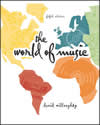Chapter 4 American Folk Music Traditions From traditional folk and blues music in rural America to
urban revivals in Chicago, Memphis, and Greenwich Village Chapter 4 recognizes the importance to our culture of music derived from oral tradition. It discusses the characteristics of oral traditions, including traditional country blues, and how music from these traditions is preserved and disseminated. The roots of folk music in America are discussed, distinguishing between the musical characteristics of white and black Americans, and between both northern and southern and urban and rural influences. It recognizes the development of new styles of music affected by cross-cultural influences and thus the combining of desired traits from more than one culture. The chapter presents an expanded view of folk music by discussing American ethnic music, the 1960s folk revival, and urban blues. Goals for Listening - Recognize melodic patterns, motives, and themes
- Identify characteristics of tempo, downbeats, and meter
- Describe rhythmic impulse
- Recognize primary chords, tonic, dominant, subdominant
- Recognize harmonic style, chord changes, and chord progressions
- Describe variations in loudness
- Describe differences in vocal and instrumental qualities
- Recognize phrase patterns
- Describe interaction of contrast and repetition
- Describe interaction of tension and release of tension
- Identify verse-refrain, aaba, and blues forms
|



 2003 McGraw-Hill Higher Education
2003 McGraw-Hill Higher Education